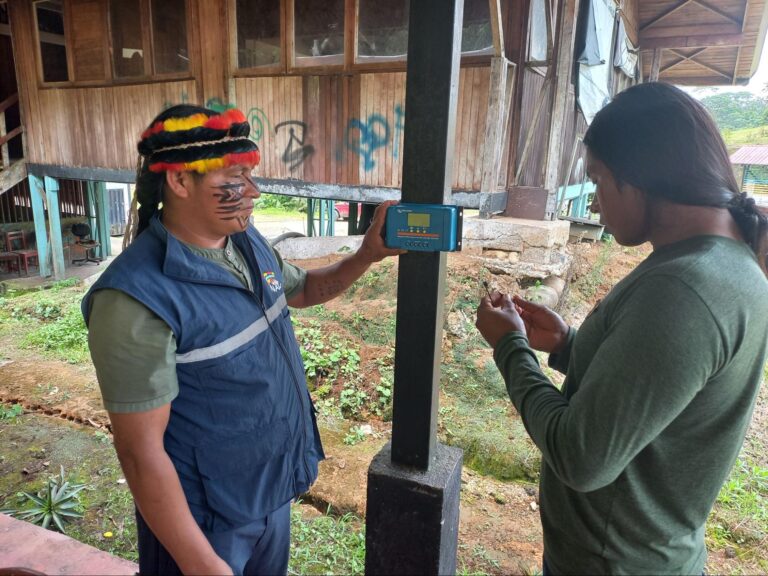High Frequency Digital Radio Systems with Rhizomatica
Our partner Rhizomatica has developed a high frequency radio systems that connect people and places hundred of kilometers apart.

Project status: Closed
Country: Ecuador
Partner: Rhizomatica
Impact goal: 1700
About the project
Rhizomatica has been developing a system called HERMES (The High-frequency Emergency and Rural Multimedia Exchange System) for several years. The project we collaborated on is bringing connectivity through high frequency radio systems to remote villages in the Ecuadorian Amazon. HERMES is a digital information platform that operates over high frequency radio. This is a system that allows sending and receiving digital information like files, email, chats, etc between two points. The advantage of using high frequency radio is that it easily connects places that are hundreds of kilometers apart. 48percent.org contributed to the undertaking of training programs for the installation of HERMES, as well as necessary equipment.
Results
In terms of equipment, 13 HERMES radios and 2 HF Radios (with full solar array) were installed. Two gateway HERMES stations (that route information coming from remote HERMES units to the Internet) were installed.
The NAE (Nacionalidad Achuar del Ecuador) gateway station is connected to 5 remote boxes in Sharementsa, Tsekuntsa, Karaka, Mashumarentsa and Jikiamat, all of which are Achuar communities. The CONFENIAE (Confederación de Nacionalidades Indígenas de la Amazonia Ecuatoriana) gateway is connected to different stations belonging to different indigenous groups as well as an NGO.
These are: Lagartacocha, a Siekopai community on the border with Peru, Tarimiat a Shuar community, Lagartacocha and Jatunplaya, both of which are Kichwa communities near the Peru border and finally one station that is set up to also monitor weather conditions in Sua (Achuar) as well as a final unit installed on a solar-powered boat belonging to the NGO Kara Solar that transports people along the Pastaza river.
In two of the stations mentioned, an interesting result emerged, paradoxically thanks to the extra time it took to do the project. Monitoring data was included from two of the project sites/partners. In the original concept of the project, HERMES was to be used to facilitate interpersonal communication. This way, Rhizomatica's partners could defend their land and the lives of people and other natural beings in the forest more safely and effectively. During the second phase, help was requested to figure out how to incorporate specific types of data and monitoring into the HERMES platform. This allowed for messages between people, and data about environmental metrics to be automatically measured and sent over HERMES. As the world grapples with reaching Net-Zero, this type of monitoring becomes increasingly important and is a direction we will increasingly take HERMES in the future.
Challenges
The project went substantially over the time alotted (by around 9 months), which led to a no-cost project extension. This was due to a few different factors.
These were:
- Resurgent Covid pandemic at the end of 2021 and start of 2022 forced at least two delays during Phase I. This pushed the true start date of trainings back three months.
- Global supply chain disruptions made it hard to produce the HERMES units to be installed in a timely manner.
- Indigenous uprising in Ecuador created uncertainty for our timeline around Phase II. This lead to numerous months of delays. As a consequence, Hermes boxes were sent to Brazil for another project, which led to further delays for this project.
- Two HERMES units were damaged beyond repair during the shipping process to Ecuador.
About the partner
Our partner Rhizomatica is on a mission to make alternative telecommunication infrastructure for people around the world.
Visit their website here to learn more about them.